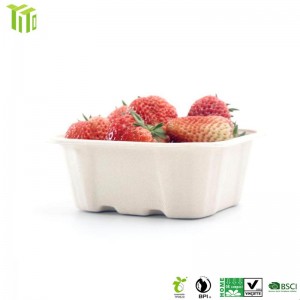What is biodegradable cellophane bags?
Cellophane bags are viable alternatives to the dreaded plastic bag. More than 500 billion plastic bags are used around the world each year, mostly once only, and then discarded in landfill or litter.
The biodegradable cellophane bags Made from clear, 100% compostable cellophane, a cellulose product derived from wood fibers taken from only sustained forests.This is the widest range of compostable cellophane bags made from FSC-certified wood-cellulose-derived bioplastic.,these bags are an affordable and easy way to be make business sustainable and support regenerative organic practices.
These eco-friendly compostable cello bags are made of certified compostable biofilm to reduce the impact on our planet and keep your products fresh! Biodegradable Cellophane Bags are static free and can be heat sealed. Our Clear Biodegradable Cellophane Bags will not biodegrade or show any loss in mechanical properties on the shelf. Biodegradation will only be initiated in a soil, compost, or waste-water environment where micro-organisms are present.
WHAT IS THE APPLICATION OF BIODEGRADABLE CELLOPHANE?
Great for food like breads, nuts, candy, microgreens, granola and more. Also popular for retail items like soaps and crafts or gift bags, party favors, and gift baskets. These "cello" bags also work well for greasy or oily foods like baked goods. BAGS、gourmet popcorn、spices、food service baked goods、pasta、nuts & seeds、handmade candy、apparel、gifts、cookies, Sandwiches,Cheeses,and more.

WHAT IS THE ANVANTAGE OF CELLOPHANE BAGS?
- Crystal clear
- Heat-sealable
- Recyclable 、Excellent barrier properties against oxygen, humidity, odors and ambient aromas, oil and grease.
- Refrigerable and freezable.
- Custom sizes and thicknesses available.
WHY ARE CELLOPHANE BAGS BIODEGRADABLE?
Biodegradability is a property of certain materials to decompose under specific environmental conditions.Cellophane film, which makes up cellophane bags, is made from cellulose broken down by microorganisms in microbial communities like compost piles and landfills.cellophane bags have cellulose which gets converted into humus. Humus is a brown organic material formed by the breakdown of plant and animal residue in the soil.
cellophane bags lose their strength and stiffness during decomposition until they completely break down into tiny fragments or granules. Microorganisms can easily digest these particles.
HOW DOES THE DEGRADATION OF CELLOPHANE BAGS OCCUR?
Cellophane or cellulose is a polymer consisting of long chains of glucose molecules linked together. Microorganisms in the soil break down these chains as they feed on cellulose, using it as their food source.
As cellulose gets converted to simple sugars, its structure begins to break down.In the end, only sugar molecules remain. These molecules become absorbable in the soil. Alternatively, microorganisms can feed on them as food.
In a nutshell, cellulose gets decomposed into sugar molecules that are easily absorbable and digestible by microorganisms in the soil.
HOW DOES THE DECOMPOSITION OF CELLOPHANE BAGS AFFECT THE ENVIRONMENT?
The aerobic decomposition process generates carbon dioxide, which is recyclable and does not remain as a waste material.
HWO TO DISPOSE OF CELLOPHANE BAGS ?
Cellophane Bags are 100% biodegradable and contain no toxic or harmful chemicals.
So, you can dispose of them in the garbage bin, home compost site, or at local recycling centers which accept disposable bioplastic bags.
Related Products
Post time: Aug-26-2022




